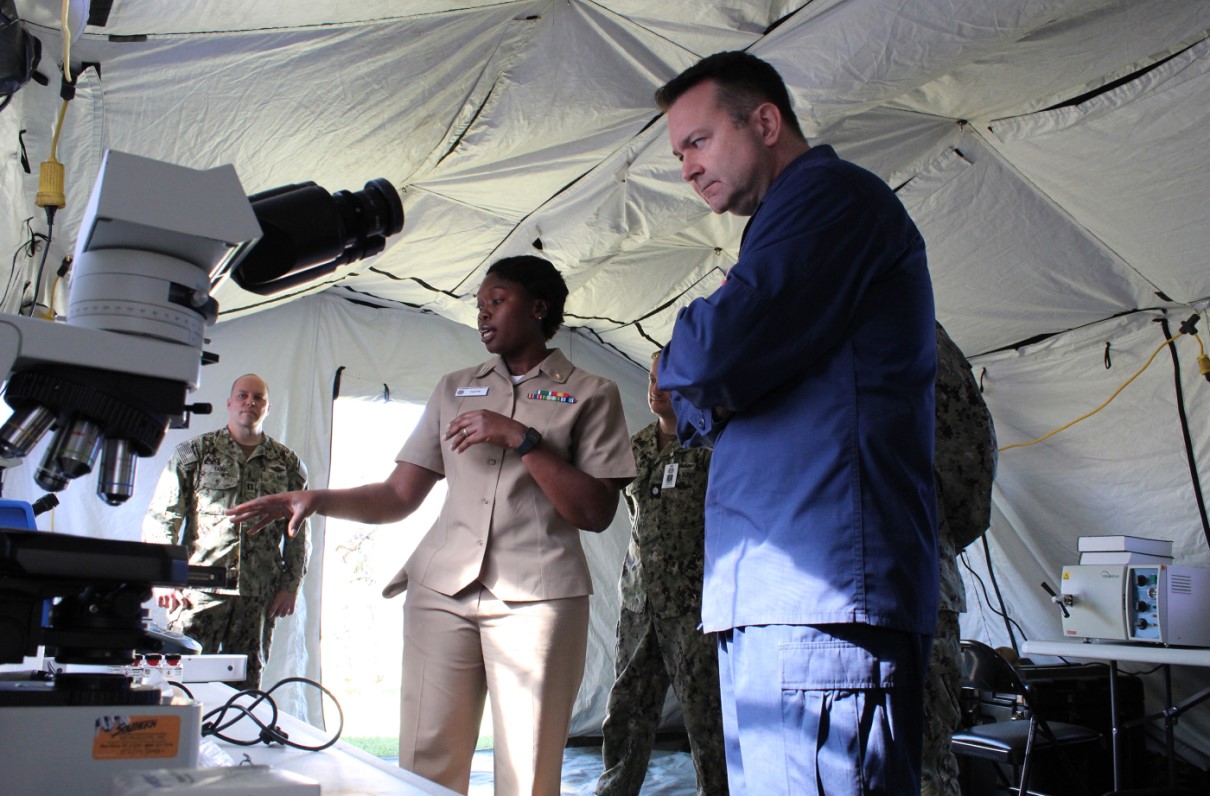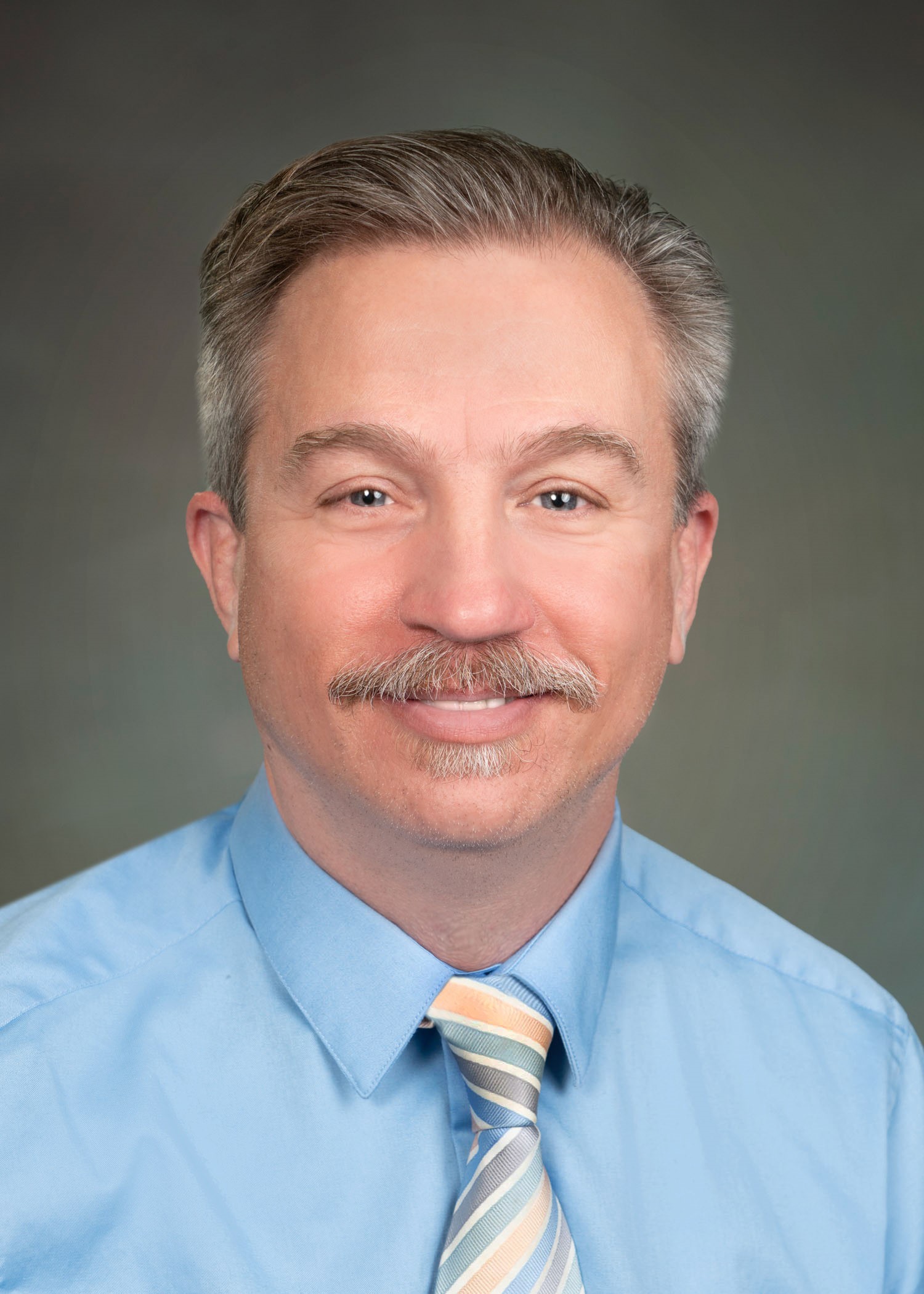(This article originally appeared in the February 2023 issue of Military Officer, a magazine available to all MOAA Premium and Life members. Learn more about the magazine here; learn more about joining MOAA here.)
A “Pathways” class at the Campbell University College of Pharmacy and Health Sciences helped Rear Adm. Brandon Taylor, USPHS, learn about more than just career opportunities in the pharmaceutical industry. It started the Defense Health Agency public health director down the path to understanding his Native American ancestry while providing a road map for his career in public health.
The U.S. Public Health Service officer performed his residency at W.W. Hastings Indian Hospital in Oklahoma after graduating from Campbell in 1998. Taylor eventually became the director of pharmacy for the Cherokee Nation Hastings Hospital in 2011 and recently served as the Indian Health Service chief of staff within the Department of Health and Human Services.
“Over my many years serving with the Indian Health Service, ... I learned of the beautiful culture, the language, the history [of Native Americans], although [it was] intermixed with terror and tragedy,” said Taylor, who is part Cherokee and Seneca-Cayuga.
“But also [I Iearned of] their beautiful resilience and spirituality. It just reaffirmed my desire to serve the underserved and vulnerable. At first,
that doesn’t seem to be [like] the DoD. But it really is. We talk about health disparities; we talk about food insecurities. A lot of our younger troops, they
are vulnerable.”
Taylor recently sat down with Military Officer to discuss the DHA’s incorporation of the armed services’ public health centers, the importance of total force fitness and biosurveillance, and more.
The following interview has been edited for length and clarity.
Q. What are your top priorities as DHA’s new head of Public Health?
A. I have four major priorities. We’re in the middle of transition [that] relates to the National Defense Authorization Act for Fiscal Year 2019. … We have transferred over 500 civilian employees from the Army Public Health Center … and when we get the civilian personnel from the Navy and Marine Corps, as well as the Air Force and the Space Force coming over, we will then be immediately jumping into my second priority, which is transformation.
Once we have the people and the stuff , the buildings and the dollars, and the equipment … then it’s really about how do we then bring that together in a common language because the forces use different language. But the application of public health is largely the same.
And then the third [priority] is really to continue to [offer] support, because we’re still in a pandemic. ... Those efforts are still front and center in public health. …
My fourth priority is in the space of biosurveillance. … We’re partnering with multiple stakeholders, not only within the Department of Defense, but also partners outside [such as the] CDC and several others. We are hoping to build upon the lessons learned from COVID, kind of breaking those silos down and sharing the information that’s appropriate to share.
[MOAA INTERVIEW: Air Force Secretary on Preparing for the Next 75 Years]
Q. How has technology changed or improved to where diseases can be detected earlier than in the past?
A. We are focused on biosurveillance and other mitigation technologies that will address those issues. Relatedly, our Global Emerging Infections Surveillance branch, GEIS, … they fund biosurveillance with multiple DoD medical research labs around the world, and that funding ... supports genomic sequencing of novel and emerging pathogens like SARS Covid 2 that leads to COVID-19.
While that technology is there, it is super important that that continues because that information, that sequencing data informs the combatant commanders. It informs DHA leadership and other health leaders on what steps to take, and it informs their decisions on how to have troops engage or not engage based on some of that surveillance data. We see the patterns of how some of these pathogens change over time. That information is very important to us. But we are always seeking to expand and enhance those capabilities.
[MOAA INTERVIEW: Army Secretary on the Future Force, Recruiting Woes, and More]
Q. Define total force fitness in terms of public health, and tell me what role DHS plays in the military achieving total force fitness.
A. Total force fitness really is a framework that focuses on the health of servicemembers throughout their entire career, and really even beyond, into the VA system. And it connects eight domains … of total health. Health is affected by psychology, nutrition, spiritual or ideological, physical access to health care, dental care, financial, ecological or environmental, and then social. … All these things tie together, and to the health of the soldier and the health of the warfighter and their families. And so for us, this is all about public health. Because it points to their overall well-being, which points to their resiliency and their ability to deploy and be ready to fight when it’s time.
We know that there are best practices that are taking place across the enterprise as well. … We have an enlisted Army public health specialist whose duty station is at this commissary [at Fort Bragg, N.C.]. … Recognizing that there are food insecurities on this base with such a young population [of ] enlisted personnel, they created a program of allowing patrons who come into the commissary to donate food. And they put together these baskets, these bags of groceries.
Those individuals who are at a certain rank or lower that they have identified as being at most risk for food insecurity, they make it available at no cost. And how wonderful is that? Thinking outside the box. What a great example of seeing a need and trying to address that need.
Military Officer Magazine
Discover more interesting stories in MOAA's award-winning magazine.

